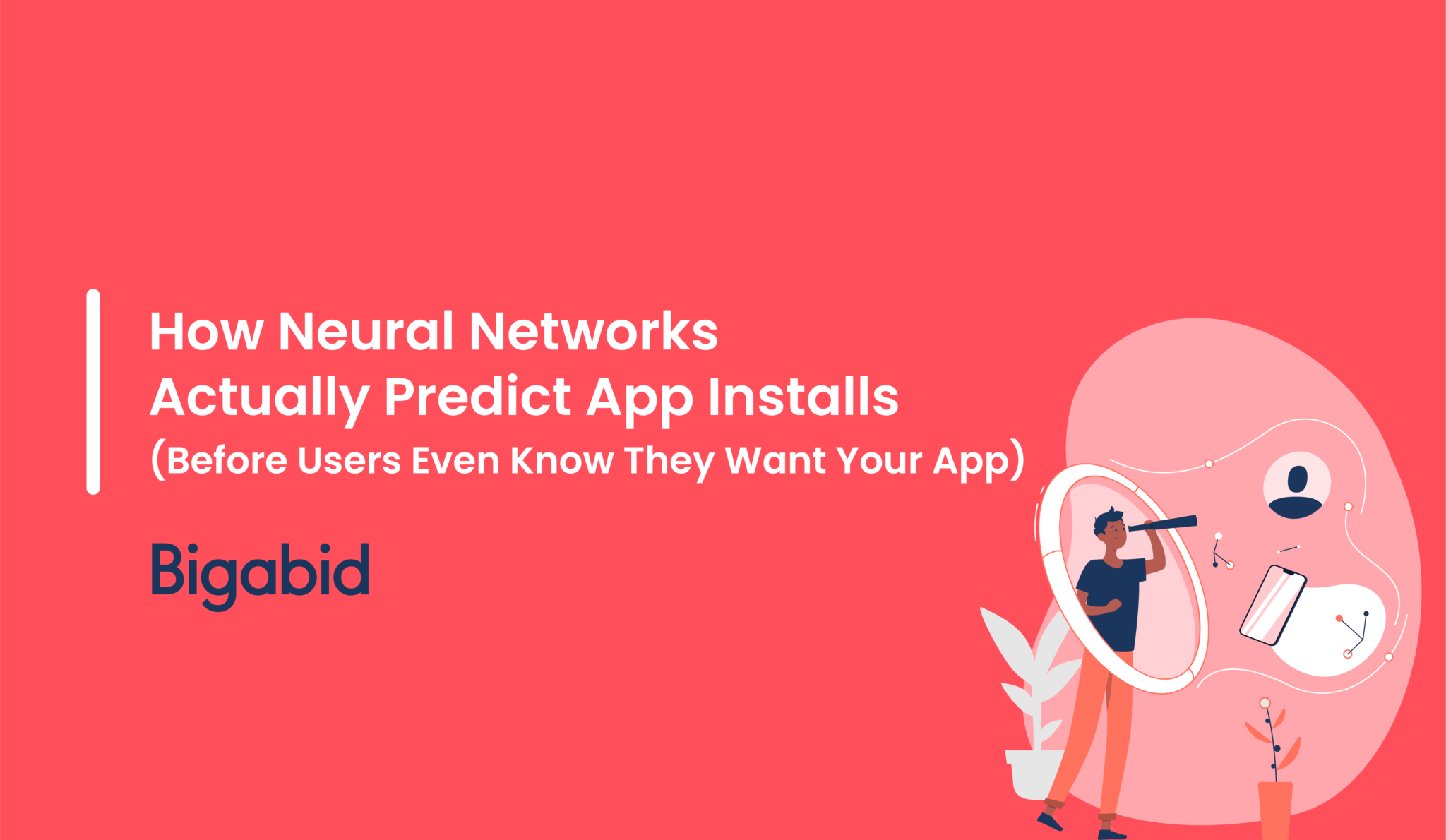
Mobile app user acquisition operates on a simple premise: find people who want your app and show them ads. But what if you could identify users who will want your app before they even realize it themselves?
That’s exactly what neural networks do. These AI systems analyze behavioral patterns, contextual signals, and digital footprints to predict app install likelihood with remarkable precision—often identifying high-intent users days or weeks before they would have discovered your app organically.
The difference between traditional targeting and neural network prediction isn’t subtle. Traditional methods look at who someone is: demographics, declared interests, basic app usage. Neural networks look at what someone does: behavioral sequences, engagement patterns, decision-making rhythms that reveal intent before conscious awareness.
A user might not know they’re in the market for a new fitness app. But their recent behavioral patterns—increased health content consumption, shopping for athletic wear, changes in sleep schedule tracking—create a predictive signal that neural networks recognize instantly.
This predictive capability transforms mobile app marketing from reactive advertising to proactive user identification. Instead of waiting for users to search for solutions, neural networks identify them at the exact moment when receptivity peaks but competition remains low.
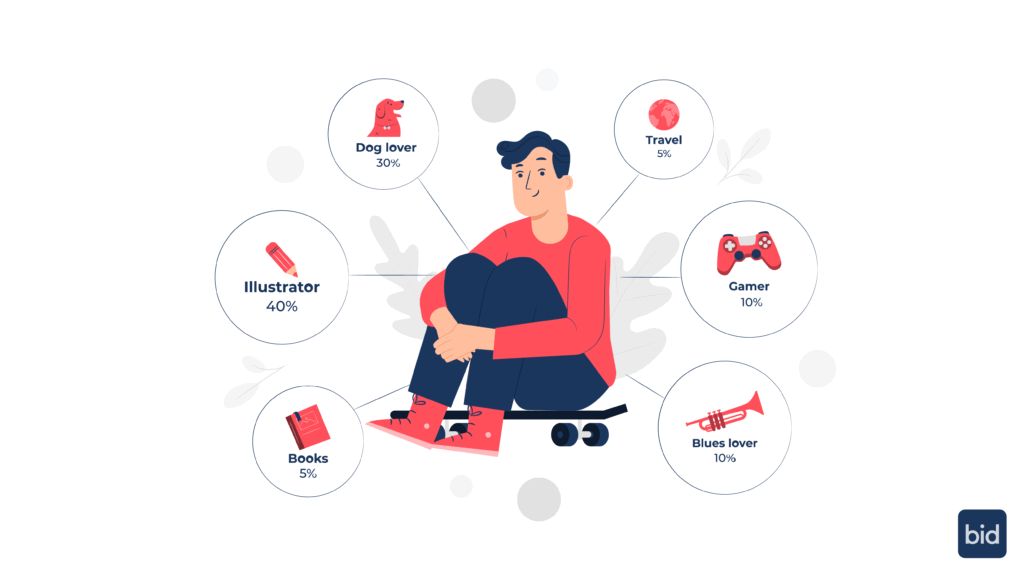
Traditional mobile app targeting relies heavily on demographic data and declared interests. Age ranges, gender, location, and self-reported preferences form the foundation of most acquisition campaigns.
This approach has obvious limitations. Demographics describe who someone is, not what they’re about to do. A 28-year-old urban professional interested in fitness could be anywhere on the spectrum from casual gym-goer to marathon trainer to someone who abandoned their resolution months ago.
Neural networks take a fundamentally different approach by analyzing behavioral patterns that reveal actual intent and future actions. These systems process thousands of data points that individually seem meaningless but collectively paint a precise picture of user intent.
App usage patterns reveal far more than demographic data ever could. Someone who downloads three productivity apps in one week, uses them intensively for a few days, then returns to their old habits shows a completely different intent signal than someone who gradually adopts new productivity tools over months.
Content consumption behaviors provide rich predictive signals. The types of articles someone reads, videos they watch, and topics they engage with create behavioral fingerprints that correlate strongly with future app install decisions.
Digital activity rhythms matter more than most marketers realize. Someone who researches products late at night but makes purchase decisions during lunch breaks has different optimal targeting windows than someone whose patterns are reversed. Neural networks identify these temporal patterns automatically.
Cross-app behavioral sequences reveal decision-making processes. Users often follow predictable paths before installing specific app categories. Someone might browse recipe apps, then search for grocery delivery services, then finally install a meal planning app. Neural networks recognize these sequences and identify users mid-journey.
Device interaction patterns provide contextual signals about user state and receptivity. Screen time duration, notification response rates, and app switching frequency all correlate with likelihood of engaging with new app advertisements.
Search behavior—even without specific app-related queries—reveals evolving interests and emerging needs. Someone searching for home workout routines, healthy recipes, and fitness apparel is signaling intent for fitness apps without explicitly searching for them.
Social media engagement patterns indicate interest intensity and purchase readiness. The transition from passive scrolling to active commenting, sharing, and saving content often precedes significant behavior changes like app adoption.
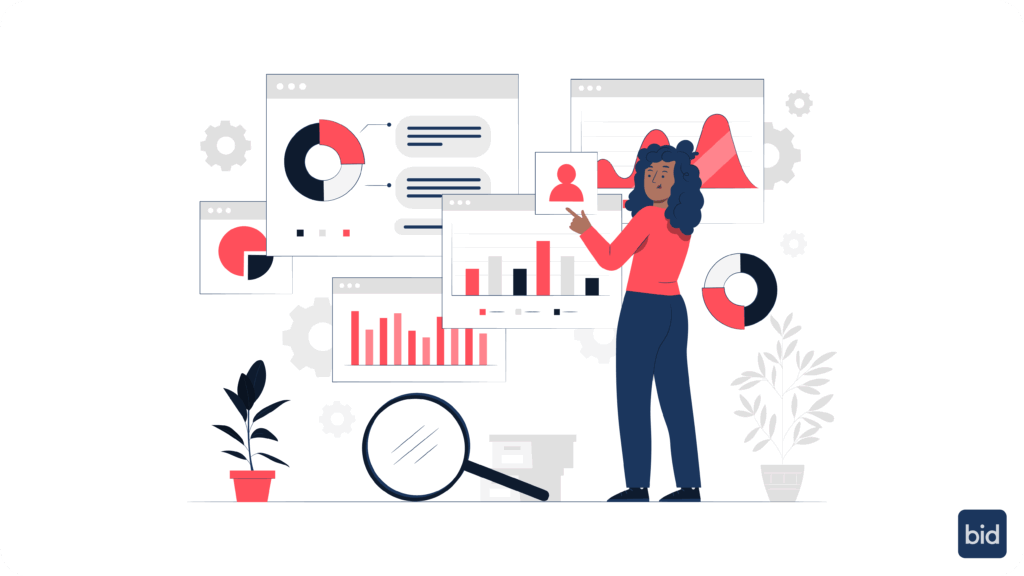
Modern neural networks use sophisticated architectures specifically designed to process complex behavioral data and generate accurate install predictions.
Multi-layer processing enables simultaneous analysis of diverse data types. While one neural network layer processes app usage patterns, another analyzes content consumption, and a third evaluates temporal behaviors. These parallel analyses combine to create comprehensive user profiles.
Sequence modeling captures behavioral patterns that unfold over time. Neural networks don’t just see individual actions—they understand how sequences of behaviors connect and what these progressions predict about future decisions.
Embedding technologies transform complex user behaviors into mathematical representations that enable pattern recognition at scale. Someone’s complete digital footprint becomes a point in multidimensional space where similar users cluster together based on behavioral similarity rather than demographic matching.
Attention mechanisms help neural networks focus on the most predictive behavioral signals for specific app categories. Gaming app predictions might weight entertainment consumption heavily, while productivity app predictions prioritize work-related behavioral patterns.
Transfer learning allows neural networks trained on extensive datasets to apply learned patterns to new scenarios with limited data. If certain behavioral sequences reliably predict fitness app installs across millions of users, these patterns transfer to new fitness apps with minimal historical data.
Contextual analysis layers incorporate environmental factors that influence install likelihood. Time of day, day of week, seasonal patterns, and even weather conditions affect user receptivity to different app categories in predictable ways.
Real-time scoring systems generate install probability predictions as users move through their digital activities. These systems continuously update predictions as new behavioral data becomes available, identifying optimal targeting moments dynamically.
Confidence scoring accompanies every prediction, enabling sophisticated budget allocation decisions. High-confidence predictions of high-value users justify aggressive bidding, while low-confidence predictions suggest conservative approaches or additional data collection.

Neural networks excel at identifying subtle behavioral patterns that human analysts would never notice but reliably predict app install decisions.
App discovery patterns reveal how users typically find and adopt new applications. Some users actively search app stores, while others discover apps through social recommendations or content consumption. Neural networks identify which discovery pattern a user follows and target them accordingly.
Category exploration behaviors indicate emerging interests before explicit intent forms. Someone browsing multiple apps in a category without installing any is often in research mode—the perfect moment for targeted acquisition campaigns.
Competitor app engagement provides crucial predictive signals. Users who recently installed or actively use competitor apps represent warm audiences with validated interest in the app category. Neural networks identify these users and predict their receptivity to alternative offerings.
Feature usage depth within existing apps reveals unmet needs that new apps might address. Someone who extensively uses meditation features in a general wellness app but never explores fitness content might be an ideal target for a dedicated meditation app.
Usage frequency changes signal evolving priorities and emerging needs. A user who suddenly increases engagement with financial tracking features might be entering a life stage where a dedicated budgeting app becomes valuable.
Notification interaction patterns indicate user receptivity to proactive communication. Users who consistently engage with app notifications demonstrate higher receptivity to new app discovery through advertising channels.
Cross-device behaviors reveal user contexts and optimal targeting approaches. Someone who researches apps on desktop during work hours but installs them on mobile during evenings suggests specific timing and messaging strategies.
Social proof signals from network effects help identify users influenced by peer adoption. When someone’s social connections begin using a new app category, their own adoption likelihood increases predictably.

Neural network predictions translate into concrete campaign strategies that improve mobile app user acquisition performance across key metrics.
Audience segmentation based on install probability enables dramatically different campaign approaches for different user groups. High-probability users receive premium creative assets and aggressive bidding, while lower-probability users get efficient awareness campaigns that build familiarity over time.
Creative matching connects specific ad variations with user segments most likely to respond. Neural networks predict not just who will install, but which creative elements will resonate with different behavioral profiles.
Timing optimization ensures ads reach users when they’re most receptive to new app discovery. Neural networks identify personal patterns in app exploration behavior and target users during their natural discovery windows.
Budget allocation algorithms distribute spend toward users with highest predicted lifetime value, not just highest install probability. A user with 60% install probability but high predicted engagement might justify higher spend than a user with 80% install probability but low engagement prediction.
Bidding strategies adapt automatically based on install predictions and competitive dynamics. When neural networks identify high-value users during low-competition periods, bidding becomes more aggressive to capitalize on favorable market conditions.
Campaign pacing adjustments ensure budget distribution aligns with high-intent user availability throughout campaign periods. Instead of front-loading or back-loading spend, neural networks pace campaigns based on predicted user intent patterns.
Platform optimization tailors targeting strategies to individual advertising platforms based on where predicted high-intent users are most accessible. Different platforms attract different user behaviors, requiring platform-specific approaches.
Negative targeting improves efficiency by excluding users with low install probability or high likelihood of poor post-install engagement. This approach reduces wasted impressions and focuses budget on genuine opportunities.
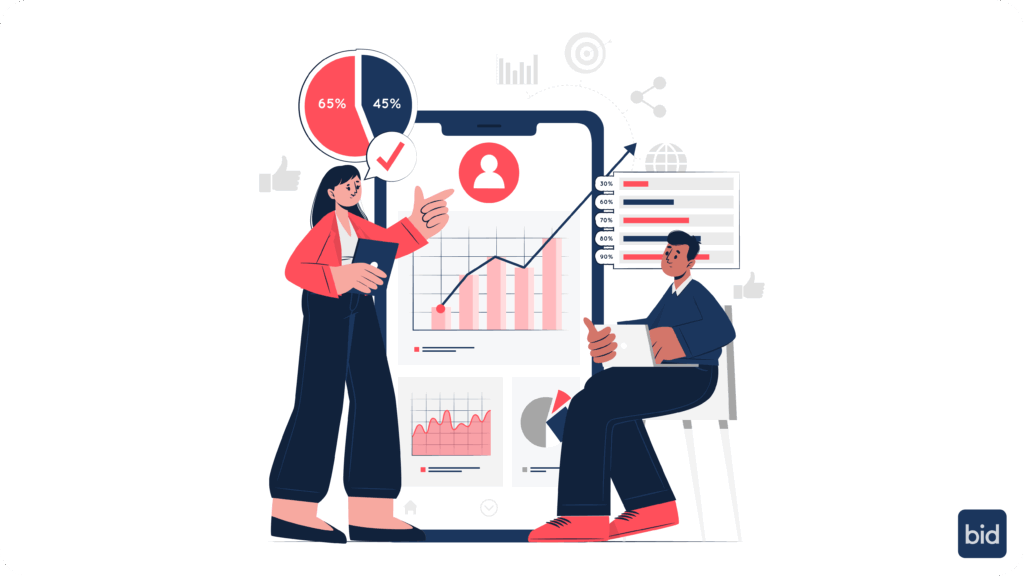
Neural network-powered install prediction delivers measurable improvements across the metrics mobile app marketers track most closely.
Cost efficiency gains emerge from more precise user targeting that reduces wasted ad spend on low-intent audiences. Marketing teams typically see meaningful improvements in cost-per-install when neural networks identify and prioritize high-probability users.
User quality improvements result from targeting users whose behavioral patterns suggest strong engagement potential beyond initial install. Neural networks predict not just installation likelihood but post-install engagement and retention probability.
Scale optimization enables campaign volume growth without proportional performance degradation. Traditional targeting often faces quality-versus-volume tradeoffs as campaigns expand. Neural networks maintain targeting precision at scale by continuously identifying new high-intent user segments.
Time-to-performance improvements accelerate campaign optimization by identifying winning targeting strategies faster than traditional testing approaches. Neural networks generate predictive insights from early campaign data that would take weeks to validate through conventional testing.
Attribution clarity improves as neural networks track which behavioral signals most reliably predict valuable users. This enhanced understanding enables more sophisticated targeting refinement and creative development.
Competitive positioning strengthens as neural network targeting identifies users before competitors reach them. Finding high-intent users early in their decision journey provides significant advantages over competitors targeting the same audiences later in the process.

Successfully implementing neural network install prediction requires strategic planning that addresses both technical requirements and operational workflows.
Data infrastructure quality directly impacts prediction accuracy. Clean, comprehensive behavioral data enables precise predictions, while incomplete or inconsistent data limits neural network effectiveness.
Integration planning ensures predictive insights flow effectively into campaign execution systems. The most sophisticated predictions become worthless if they can’t be implemented across advertising platforms efficiently.
Privacy compliance becomes increasingly important as neural networks derive insights from behavioral patterns. Maintaining regulatory compliance while leveraging predictive capabilities requires careful attention to data processing methods.
Campaign structure optimization ensures neural networks have sufficient volume and diversity to identify meaningful patterns. Overly narrow campaigns might not provide enough behavioral data for effective prediction.
Testing methodologies need adjustment to properly evaluate neural network performance. These systems often show gradual improvements as they accumulate data and refine predictions, requiring longer evaluation periods than traditional approaches.
Team education ensures marketing teams understand how to interpret and act on neural network predictions. These systems provide probability scores and recommendations, but human expertise remains essential for strategic decisions.
Performance measurement frameworks require expansion beyond traditional metrics to capture neural network benefits fully. Install probability accuracy, user quality predictions, and targeting efficiency indicators supplement standard campaign metrics.

Neural network capabilities continue advancing rapidly, with emerging technologies promising even more sophisticated install prediction for mobile app marketers.
Cross-device prediction will enable neural networks to recognize users across multiple devices and predict install likelihood based on complete cross-device behavioral patterns. This unified approach improves prediction accuracy and enables more sophisticated targeting strategies.
Predictive lookalike modeling will identify users who share behavioral patterns with high-value existing users, even when those patterns aren’t obvious to human analysis. This capability extends beyond traditional lookalike audiences to find truly similar users based on behavioral fingerprints.
Real-time behavioral adaptation will enable neural networks to adjust predictions instantly as user behaviors change. Someone who suddenly shifts from casual browsing to active research mode can be identified and targeted immediately rather than waiting for batch processing cycles.
Privacy-first prediction techniques will maintain targeting precision while operating with increasingly limited explicit user data. Advanced neural networks will generate accurate predictions from anonymized, aggregated behavioral patterns that respect privacy regulations.
Market condition awareness will enable neural networks to adjust predictions based on broader market dynamics, competitive activities, and category-specific trends that influence user behavior patterns.
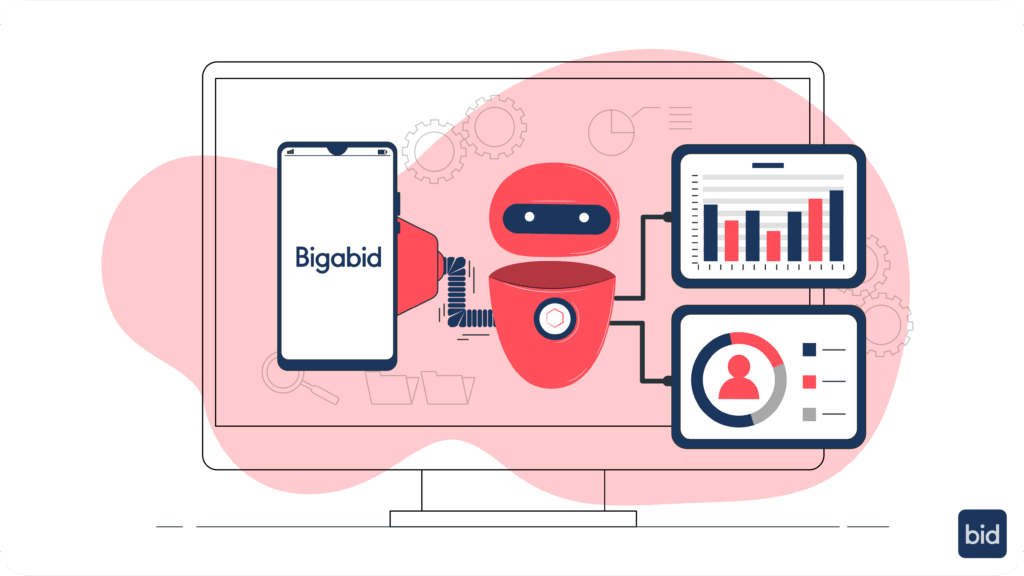
Neural network install prediction represents a fundamental shift from reactive advertising to proactive user identification. Instead of waiting for users to signal interest explicitly, these systems identify high-intent users based on behavioral patterns that precede conscious awareness.
The competitive advantage grows as neural networks accumulate more data and refine their predictions continuously. Early adopters build prediction accuracy advantages that become increasingly difficult for competitors to match.
Mobile app marketers implementing predictive targeting gain significant benefits through improved efficiency, better user quality, and enhanced campaign performance. The technology becomes essential as acquisition costs rise and competition for high-value users intensifies.
Bigabid’s neural network platform analyzes behavioral patterns and contextual signals to identify high-intent users before they actively search for mobile apps. The platform transforms user acquisition from broad demographic targeting to precise behavioral prediction that identifies users at optimal moments for engagement.
Marketing teams using neural network install prediction eliminate targeting guesswork, reduce acquisition costs, and achieve superior user quality through data-driven identification of high-intent audiences.
Contact Bigabid to learn how neural network install prediction can transform mobile app user acquisition through behavioral analysis and proactive user identification.